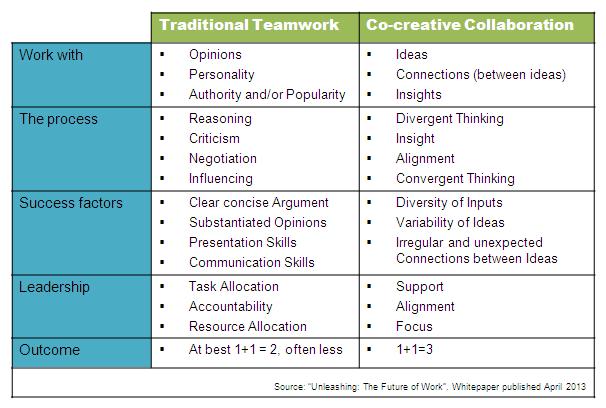Emergence and evolution of alliance management

As R&D collaborations have grown in volume and complexity over the last decade, so has widespread adoption of formal alliance management, especially by the larger companies. Yet despite recent enhancements with tools such as balanced scorecards, formal alliance management has its limitations. As the nature of many collaborations shifts from outsourcing or intellectual property transfer to true innovation partnerships, Robert Thong argues that formal alliance management needs to be supplemented by other informal ingredients to ensure successful outcomes.
In the early days, most R&D collaborations matched one of these categories:
1. Intellectual property transfer: A large pharma would fund early-stage academic research or discovery programmes at a small biotech until the work could be brought in-house.
2. Co-Development: one party with relevant regulatory and medical expertise would work with the owner of a product asset to jointly bring it to market.
3. Straight Outsourcing: one party performs specific activities for the other party, justified by the former's specialist expertise or lower cost base.
In all the cases above, each side conducted its own clearly defined activities, with information and outputs exchanged at specified points in the process, much like how outsourced manufacturing partnerships operate. Consequently, to ensure each party delivered their prescribed contributions within budget and timelines, the first wave of alliance management initiatives implemented process management tools e.g. deliverables tracking, project Gantt charts and service level agreements.
"Owing to the inherently complex and unpredictable nature of life science R&D, many alliances experienced the need for frequent changes of focus and direction..."
To oversee the alliance and resolve issues as they arose, formal project governance structures were also established. Typically, one would have a Joint Steering Committee, a Joint Scientific Review Committee and Joint Project Teams, plus pairs of co-alliance managers and co-project leaders assigned as the key "point people" for coordinating all the activities.
Owing to the inherently complex and unpredictable nature of life science R&D, many alliances experienced the need for frequent changes of focus and direction as experiments failed unexpectedly or serendipitous breakthroughs emerged. Whereas the first generation process management tools, being focused on operational metrics and contractual obligations, tended to drive the collaborators towards the original operating plan which was no longer valid.
In response, some companies began implementing balanced scorecards and other similar tools to align goals and maintain consistent strategies while allowing the collaborators to operationally adjust to unanticipated scientific results and regulatory rulings. Balanced scorecards work by aligning strategic goals and articulating the strategies for achieving these goals as a "cause-and-effect" flow of linked objectives and metrics with respect to people, processes, internal customers and stakeholder outcomes. The governance structures implemented with this approach are similar to that described earlier, with the addition of problem-solving teams for prioritised groups of objectives, the latter referred to as "strategic themes". There have been several well-documented success stories,1 although these mostly relate to major clinical development partnerships between large pharma and major CROs. Nevertheless, this approach appears to be the current best practice for large strategic collaborations.
"Another key driver for a very productive innovation partnership is 'co-creative collaboration'..."
Limitations for "big-small" innovation partnerships
Implementation of the formal alliance management machinery (joint committees, teams, co-leaders, metrics, etc.) in the large strategic partnerships is often supplemented by efforts to drive the corresponding behavioural changes. For example, the oft-quoted Solvay-Quintiles case required:
1. Alignment of personal performance reviews and incentives with the collaboration's objectives and metrics.
2. Major communication and mobilisation activities, using2 "such tools as laminated strategy maps, video presentations by company executives and alliance leaders, and even an alliance game to make sure all stakeholders understood the mission and the goals of the partnership ... followed up with periodic newsletters and e-mails touting progress made".
Now let us consider whether such an approach makes sense in the more typical case of a "big-small" innovation partnership where a large pharma is working with a small biotech, academic laboratory or specialist CRO. Often these alliances aim for collaborative innovation i.e. working hand-in-hand to innovate a new scientific approach or overcome a key challenge by sparking off each other's know-how. In the context of such big-small innovation partnerships:
• The governance structures mentioned earlier continue to be applicable.
• Comprehensive goal alignment at all organisational levels is not feasible as the needs and culture of the small player differ greatly from the large player; at best a concise "scorecard" for a small number of joint objectives and metrics is the most one could hope for.
• Driving behavioural change top-down via a comprehensive performance management and communication programme is not practical for the large player since this partnership would be just one of scores of such collaborations that it participates in – each with a different small player, at different stages in the lifecycle, with different needs.
• Overly heavy process management can cause more harm than good for creative innovation3.
Informal bottom-up behavioural change mechanisms needed
For big-small innovation partnerships in particular, bottom-up informal mechanisms are needed to complement and address the shortcomings of the top-down formal change mechanisms mentioned earlier. Unlike the latter which have been well characterised, the best practices for informal bottom-up change mechanisms are still evolving rapidly as companies learn from real-life experience what works and what doesn't. Nevertheless, we will mention two mechanisms below which this author has found to be powerful.
While it might be difficult to achieve comprehensive alignment of goals and objectives at all levels for reasons mentioned earlier, this does not mean a "win-win" cannot be achieved. What matters is that each side of the collaboration understands and allows for the other's "currencies" i.e. those things that are most important and desired by each side. It is not about defining shared goals (which is the usual approach for "alignment") but rather, recognising the other party has different aims, respecting these aims and allowing them to be achieved as long as there is no significant detrimental effect to oneself. Understanding and then addressing the other party's currencies is a skill that both sides of a collaboration need to develop and practise4.
Another key driver for a very productive innovation partnership is "co-creative collaboration" i.e. where synergetic interactions between the team members from both sides lead to solutions which are "more than the sum of the parts". This means team members not only contribute what they know and can perform individually, but also push each other's thinking, working at the intersections of each other's know-how, to "co-create" superior outcomes together. The main differences between traditional teamwork and co-creative collaboration are illustrated below:
Consistent co-creative collaboration is best achieved via a combination of:
• Educating team members on the relevant principles, behaviours and practices.
• Selecting team members with both content knowledge and aptitude to work this way.
• Deploying skilled team facilitators to manage the team process in support of the project leaders.
• Learning by doing i.e. continuous honing through regular practice and reflection.
References
1. See (a) R.S. Kaplan, D.P. Norton and B. Rugelsjoen, "Managing Alliances with the Balanced Scorecard", Harvard Business Review, Jan-Feb 2010 which describes the approach used by Solvay and Quintiles, and (b) K. Dolan, K. Fookes and T. Mylenski, "Best Practices in Managing Alliances: Using the Balanced Scorecard Methodology in a Multi-Vendor Partner Relationship" (presentation at the DIA 2012 Conference, Philadelphia, Jun 2012), which describes the approach used by Takeda with Covance and Quintiles.
2. From the Kaplan, Norton and Rugelsjoen Harvard Business Review article referred to earlier
3. The consequences of excessive process management in the biopharma industry are discussed in this article http://www.scitechstrategyblog.com/2013/04/two-decades-of-biomedical-rd-improvement-initiatives
4. For more about currencies and how to use them, see the David Bradford and Allan Cohen books Influence Without Authority and Influencing Up
About the author:
Robert Thong co-founded and chairs Unleash, a consulting and management education firm that helps knowledge-intensive organizations address their strategic opportunities and business challenges through their own collaborative and innovative actions.
He is a veteran of dozens of strategic initiatives as a consultant, executive coach, business leader and non-executive board member in pharmaceuticals, medical technology and healthcare. In addition to partnering with senior executives on Unleash's client engagements, Robert is also a highly regarded speaker, workshop leader and facilitator of management team offsites.
You can reach Robert at robert@unleashteam.com or visit www.unleashteam.com to find out more about Unleash
Do you have any suggestions for other informal mechanisms you have found useful for helping collaborations be more innovative and effective? Or comments on the ones I mentioned above based on your own practical experiences?













